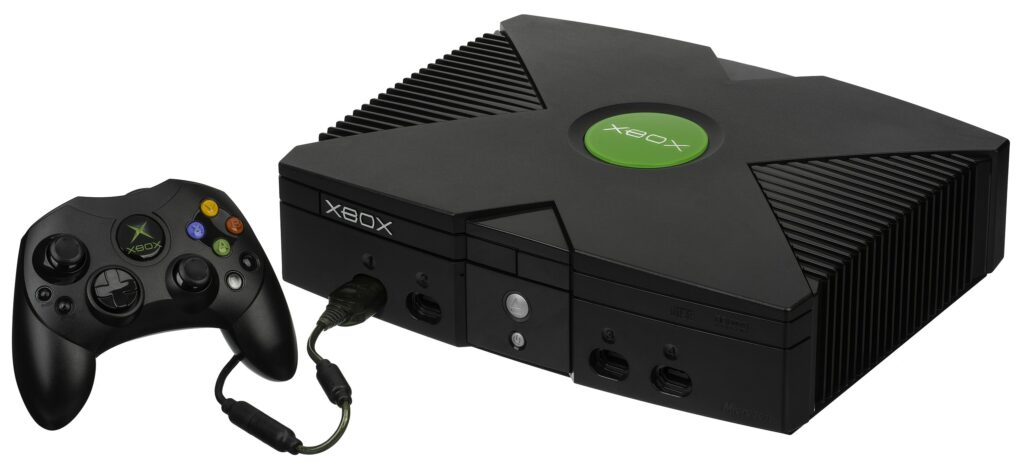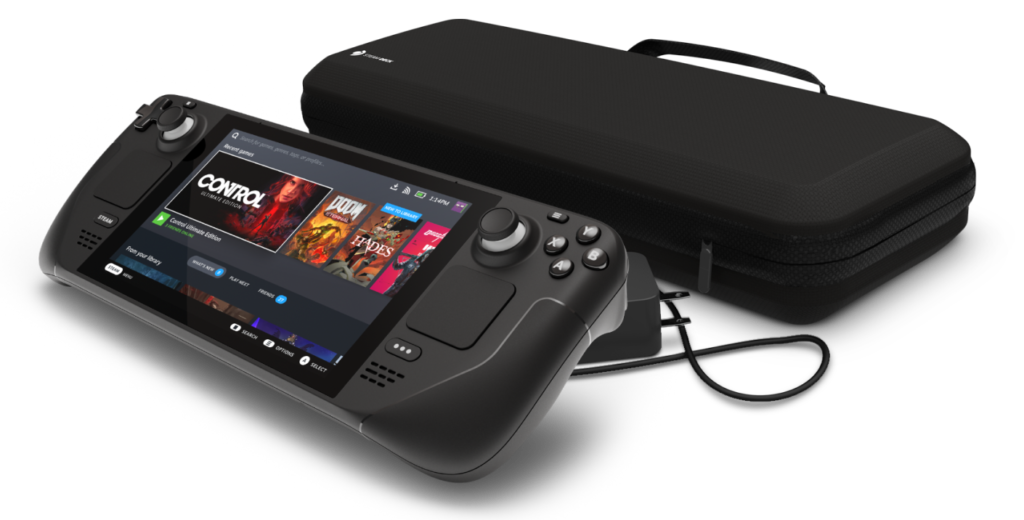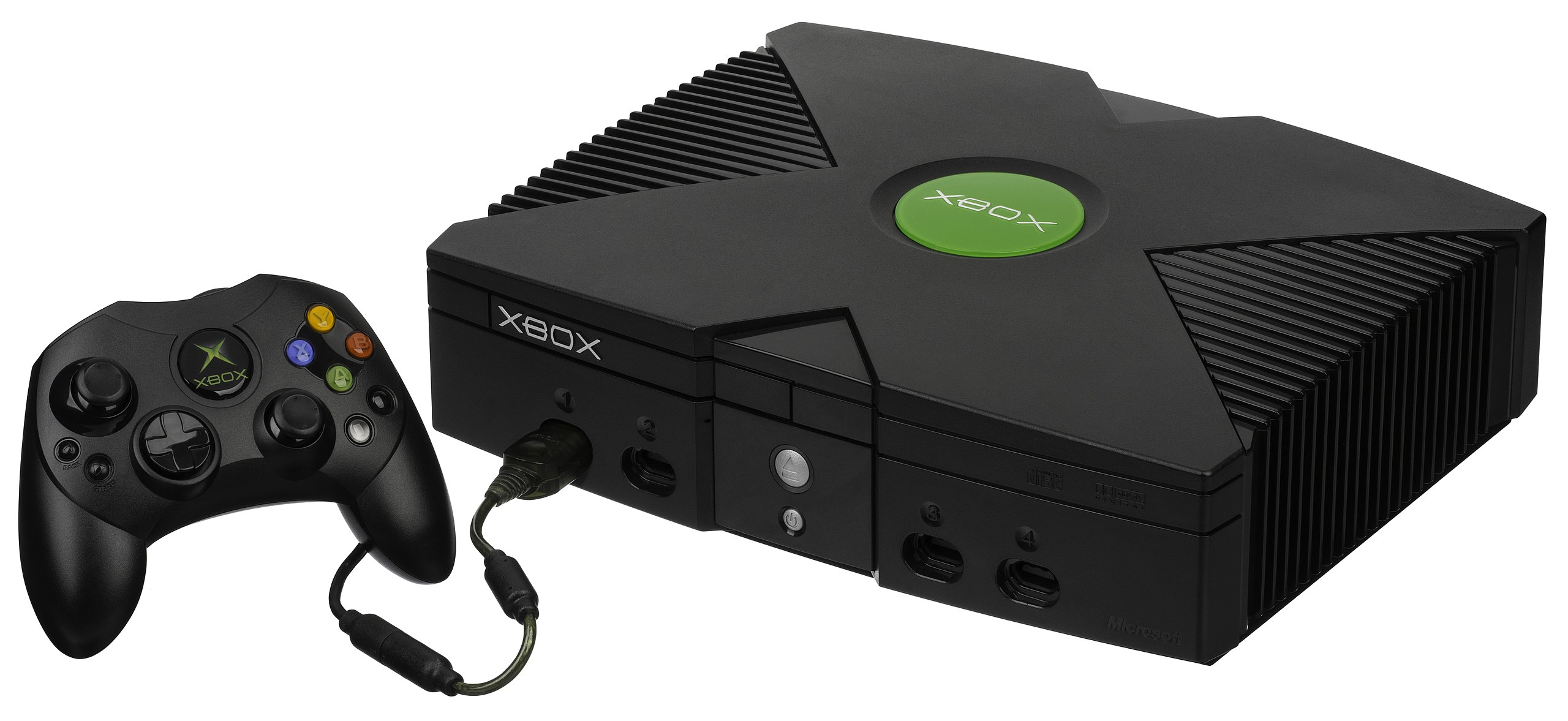The other night I booted up my Xbox and revisited an old favorite, Bioware’s Knights of the Old Republic. I rolled up a character and cruised through the opening missions, then the clock struck my eye. It was late and I would much rather be in bed than in my cold Massachusetts living room.
I tip-toed into bed, my wife and kid sleeping away peacefully, but I wasn’t fully tired yet. I sat there wishing I could keep playing KOTOR for a few more quests, and then drift away into slumberland with my head full of sugar plum faeries and Sith warriors. I had plenty of options for doing so: I could buy the game on my Nintendo Switch, or I could stream it from my Xbox to my phone, or I could even lug a laptop into bed and pair it with a controller.
All of these options, frankly, sucked. I play some games on my phone, but they tend to be quirky time wasters, and that wasn’t what I was looking for. Dragging a laptop, charger, and controller into my bed and trying to awkwardly balance them all like I was on some trans-Atlantic flight wasn’t what I was after either. The Switch was the most obvious choice, but I really didn’t want to buy a 20-year old game for the fifth time on yet another platform (sorry Bioware, you’ve gotten my money plenty). What I wanted was something distinct and simple, and it struck me as a bit crazy that it didn’t exist: I wanted to play Xbox in my hands.
I even envisioned the thing. Call it the Xbox Series A. The Anywhere Xbox.
In the 20 years since Microsoft first introduced the original Xbox console, they’ve pioneered a lot of innovations – Xbox Live online gaming, Gamertags, achievements, games as a service via Game Pass, Cloud gaming, and more. There’s one area where Microsoft hasn’t dipped its toe in yet- dedicated handheld gaming hardware.
Microsoft’s answer for portable gaming today lies entirely in its novel and ever-expanding Cloud gaming capabilities. Right now, you can stream Xbox games to a phone, tablet, PC, or laptop. Xbox is no longer a console, it’s a platform. And all that’s great.
But here’s the thing. A big part of the success of the Xbox brand has been due to the incredible value it delivers via its custom-built consumer hardware. When the OG Xbox launched 20 years, it sported unheard of features at the time like an Ethernet port (when 95% percent of us where still on dial-up), built-in hard disk storage, and strong graphical processing power, all delivered at a price much more friendly than building a bespoke gaming PC.

The same holds true today. In a world where supply chains are constrained by pandemics and crypto mining, a $499 Xbox Series X that spits out 4k graphics at 120 fps is a fantastic alternative to $1500 graphics cards and all the other costs of a gaming PC. Paired with Game Pass, today’s Xbox lineup is an almost too good to be true combination of hardware and services value.
It’s finally time for a handheld Xbox
As cool as the Cloud gaming and Xbox-as-a-Service innovations are, thumbing my way through Halo or KOTOR on my Samsung phone just doesn’t quite click for me. It’s neat. But it’s not real enough for me to sink my teeth into a game in the same way dedicated hardware provides. And this isn’t just my personal opinion- the Nintendo Switch is selling like crazy, and Valve is poised to release its own dedicated portable hardware system later this month, the much-hyped Steam Deck. There is a huge appetite for handheld gaming devices, even with smartphones in every pocket. With Xbox Cloud gaming and Game Pass running full tilt, it’s finally time for Microsoft to introduce a handheld Xbox that brings the same powerful experience of Xbox consoles to portable hardware.
In a lot of ways, the stage is set for Microsoft to boldly make its move into the handheld gaming arena. Steam Deck entering the market is a great trailblazer, and positions Microsoft is well to closely study what works with Valve’s device, what doesn’t work, and how to make something uniquely better. It’s not unlike the landscape when Xbox first debuted, where the Microsoft design team was able to launch something that tapped into core elements that gamers wanted and deliver what they were missing from competitor boxes like the PlayStation.
Less like Vita, more like Valve
The history of handheld gaming devices is littered with painful flops and expensive failures. Remember such vaunted names as Atari Lynx or Nokia N-Gage? Despite offering better hardware, better graphics, and more features than Nintendo’s extremely successful Game Boy and DS consoles, a ton of impressive handheld gaming consoles have gone down in flames over the years, with various industry titans trying their hand and ultimately coming up short against the power of Mario, Pikachu, and Zelda. In fact, based on its unmatched IP library and knack for delivering “just enough power to be passable” engineering approach, Nintendo has almost owned the handheld space exclusively as the top dog for decades. Sony made significant inroads with the PSP, only to lose that ground completely with the ill-fated PS Vita (despite that system’s gorgeous OLED display and fantastic graphics). It’s been crickets on the handheld front from Sony since.
But things are different this time around. Valve’s Steam Deck signals the birth of an almost entirely new handheld gaming segment, one distinctly apart from the segment Nintendo has carved out for itself or what Sony tried to do. With modern gaming solidified around a common x86 architecture and major component manufacturers like AMD and Nvidia innovating SOC and mobile capabilities, Microsoft wouldn’t be saddled with the kind of oddball platforms that hampered and ultimately doomed past handheld efforts from other companies.

And here’s the golden opportunity for Microsoft: they finally have an IP library that rivals Nintendo’s, and one that plays to an entirely different end of the gaming spectrum. With their recent acquisition of Activision-Blizzard and Bethesda, and the runaway success of Game Pass (with its 12.5 million subscribers), the challenge of delivering new handheld hardware with some kind of killer app that rivals Pokemon is now completely off the board. The Xbox and Game Pass audience is established and the games are already in place. Rather than courting Xbox users to a whole new sandbox to play in, Microsoft would essentially just be providing fans a way to extend the experience they already know and love to dedicated handheld hardware, specifically built and engineered to play the games they like to play, the way they are used to playing them.
Xbox Series A – The Anywhere Xbox
The Xbox Series approach seems ripe for expanding into new territory. Xbox Series X is your powerhouse tower that you connect to your 4k OLED TV. Xbox Series S is an affordable next-gen entry and Game Pass delivery mechanism. The next entry in the Series family should be an exciting new handheld, one that delivers the hardware power we love about Xbox and extends the awesome experience of Game Pass in a streamlined, powerful, and cool handheld device. Redmond, if you’re listening, I’ll be first in line to pre-order!
